Perhaps we should start by clarifying a few things.
Events in the browser, are modeled more like a "nesting hierarchy", then a queue -- How it works is referred to as Event Bubbling -- [Wikipedia][1]
But, essentially what you are doing, when adding an EventListener, is hooking into one or more points of the DOM, and saying hey, when X Event passes through here, use function Y to handle it, before passing it along up the stack.
Once an EventListener has been "added" it remains active waiting to be given an event. What exactly it does is defined in its handler function.
let myYFunction = function( e ) { ... }
let myXListener = baton.addEventListern('X event', myYFunction );
// at this point, anytime 'X event' happens to baton, myYFunction will
// be called to handle it...
Now let's take a look at your examples, lets break things down a little,
const baton = document.querySelector('button');
This first line, is simply querying the DOM, to find the first element of type 'button' in the page. Right... This is "where" we want to insert our event handler. We could add them to any element, anywhere in the DOM, we could even hook into the 'body' element if we wanted to.
Ok, then you have this bit,
baton.addEventListener('mousedown', (e) => {
console.log('baton');
baton.addEventListener('click', (e) => {
console.log('baton click');
});
});
Which is "nesting" the creation of the 'click' Event Listener, but only after a 'mousedown' event has been "handled". There is no real reason the 'click' event had to be registered within the function body of the mousedown handler.
If we re-write it a bit, it may be clearer what is actually going on.
baton.addEventListener('mousedown', (e) => {
console.log('baton mousedown');
}
baton.addEventListener('click', (e) => {
console.log('baton click');
});
Additionally I would also point out, that how it is being done currently "works" -- but it is actually hiding a tiny bit of sloppy coding... you see every time the 'mousedown' event is triggered a new 'click' eventListener is being registered... so eventually you may end up with many, many, many click handlers responding to a single 'click' event... Check out MDN to learn more about [this][2]
I hope this answers your initial questions as to what is going on.
To your question "When I click a button, I get 'baton' and 'baton click' logged to console. Now my question is what exactly happens here?" -- To me, it would look something like this:
- a 'mousedown' eventListener is added, however nothing "executes"
- a 'mousedown' event takes place, now your 'mousedown' listener executes its function, which in turn logs out to the console, and registers a new 'click' handler -- but again, does not execute.
Moving forward, steps 1 and 2 are repeated for every 'mousedown' seen by baton. Additionally, for any 'click' event passed through baton --- which happens after every 'mousedown' on baton:
- A 'click' event occurs, your 'click' handler is then executed and logs out to the console.
SPA event handling strategies
When working with SPAs, where multiple "pages" are displayed, in the same page load... it can get messy, all these event listeners hanging around piling up on one another. If you are going to employ eventListeners between "Pages" of your SPA, you might want to look into how to "remove" them too. - [MDN][3]
That way, you only have eventListeners active for the current "Page" of your SPA.
Also, consider "generalizing" your handlers, and attaching them higher up in the DOM... This would allow you to have only a few event listeners which "route" events to their "logical" handlers.
Random/Different Behaviors
With the steps outlines above, 1, 2 and 3 and how they don't all happen at the same time. You will see what appears to be random output to the console... try and run something like this, to get a proper sense of things:
let cCount = 0;
let mCount = 0;
let tCount = 0;
const baton = document.querySelector('button');
baton.addEventListener('mousedown', (e) => {
console.log('mousedown # ' + (mCount++) + ' order:' + tCount++);
baton.addEventListener('click', (e) => {
console.log('click # ' + (cCount++) + ' order:' + tCount++);
});
});
[1]: https://en.wikipedia.org/wiki/Event_bubbling#:~:text=Event%20bubbling%20is%20a%20type,Provided%20the%20handler%20is%20initialized).
[2]: https://developer.mozilla.org/en-US/docs/Web/API/EventTarget/addEventListener
[3]: https://developer.mozilla.org/en-US/docs/Web/API/EventTarget/removeEventListener
